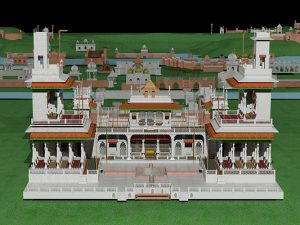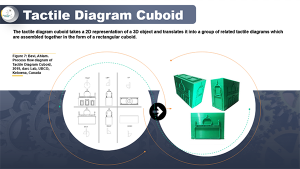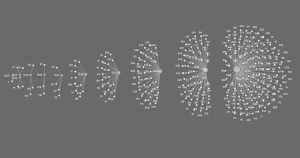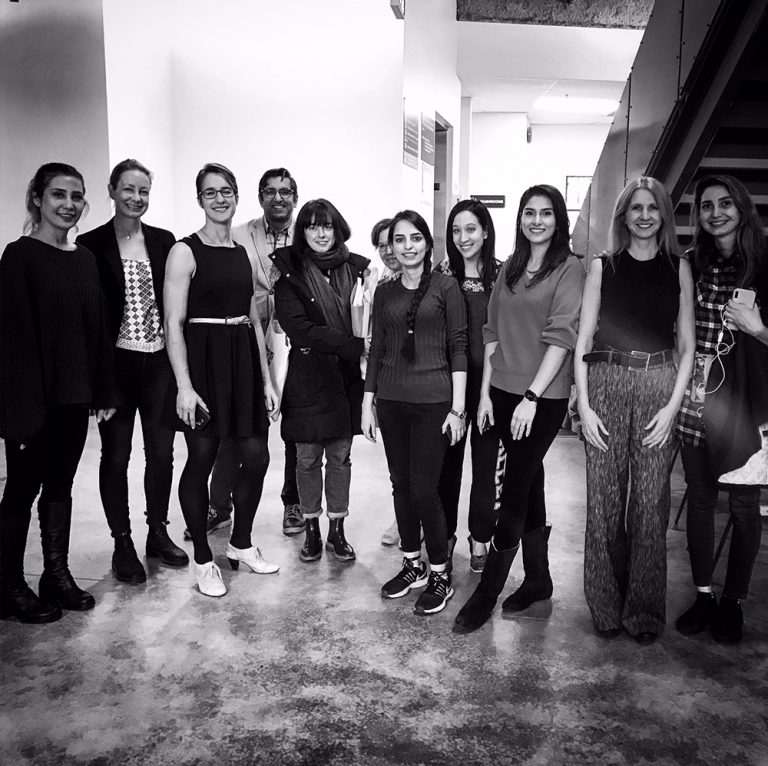Hussein Keshani, Associate Professor of Art History and Visual Culture, is chairing the session darc Experiments in Digital Islamic Art Histories, at the upcoming 2020 Conference of the Universities Art Association of Canada, on Oct. 16, 2020. In addition to Dr. Keshani, three IGS students in the Digital Arts & Humanities (DAHU) theme will be delivering conference papers on their research.
“This is an exciting opportunity for our DAHU students to share their work on a national stage and help transform the discipline of art history, while enriching the field of Islamic Art History” notes Dr. Keshani.
“It’s a testament to the ingenuity and innovation of our students that they’ve been selected to present their research at the 2020 UAAC conference, which is the biggest such international gathering in Canada.”
Dr. Keshani will discuss how the digital turn in the Humanities and Art History runs the risk of accentuating the already marginal position of Islamic art history in the academy, particularly in Canada and present an overview of the work of the digital art history research collective (darc) at UBCO.

3D modelling image
Presenters will discuss scholarly remediations of South Asian miniature paintings using 3D printing, how digital media can be used to critically narrate and interrogate UNESCO’s construction of Iranian architectural heritage and how data visualizations can be used to provide alternative perspectives on artistic collaboration and choices in Persian art. Together these experiments explore what Digital Art History can be, while illuminating what Digital Islamic Art History cannot be due to entrenched inequities.

Tactile Diagram Cuboid
Doctoral student, Ahlam Bavi will present her project, “Remediating Islamicate Art using 3D Printing for Low-vision Audiences”, a pilot project to explore how Islamicate Art collections can be made more accessible to low-vision visitors. This study aims to develop solutions for low-vision visitors by designing a 3D Toolkit to be used by galleries and museums.

Aga Khan Garden web-app
Sepideh Saffari, a second year doctoral student will present her paper, “Using Digital Media to Interrogate UNESCO’s Approach to Iranian Architectural Heritage.” This paper discusses the initial stages of her visual-centric study of UNESCO’s role in the construction of Iranian national identity through the representation of architectural heritage. While UNESCO believes that peace is based on dialogue and mutual understanding among nations, it does not sufficiently promote the cross-cultural influences nations have on each other, particularly in its representations of visual culture.

Data Visualization
Masters student, Yasaman Lotfizadeh will present her study, “Shifting Perspectives on Safavid Artistic Collaboration and Choices Using Data Visualizations,” which investigates the extent of artistic collaboration in one deluxe Persian illustrated manuscript, the Shah Tahmasp Shahnameh (also Shahnama) paintings. The study outlines a Social Network Analysis and the use of Digital Humanities tools and methods to analyze the patterns of artistic collaboration among the various artists who worked on this manuscript under Shah Tahmasp’s patronage.

Digital Arts & Humanities theme cohort, 2020 (this photo was taken prior to COVID-19 physical distancing requirements.)
About Hussein Keshani
Hussein Keshani is Associate Professor and Program Coordinator in Art History and Visual Culture in the Faculty of Creative and Critical Studies at The University of British Columbia Okanagan campus. He leads darc (digital art history collective), which operates out of the Canada Foundation for Innovation funded AMP (Audio, Media, Poetry) lab. He is also the Coordinator of the Digital Arts and Humanities interdisciplinary graduate theme and has formerly served as the interim head of the Centre for Culture and Technology. He is a specialist in Delhi Sultanates, Mughal and late-Mughal visual cultures as well as digital art history, teaches courses in art history, world literatures and digital humanities and is the recipient of multiple Social Sciences and Humanities Research Council for Canada grants.
About Ahlam Bavi
Ahlam Bavi is a conceptual artist, industrial designer, and digital humanist. She has studied and researched at the University of Tehran, the University of Lucerne, Switzerland and the University of Calgary, where her digital sculpture work was recognized by an award. She is trained in the Reggio Emilia Educational approach, as well as in VR and AR and digital technologies. Ahlam’s visual artworks consist of conceptual sonic sculptures, digital remediated artworks, 3D calligraphy, and algorithmic 3D printed sculptures. She also researches how museums can improve the experience of low vision visitors by re-imagining artworks through digital technology. Currently, she is a PhD candidate in the interdisciplinary Digital Arts & Humanities program.
About Sepideh Saffari
Sepideh Saffari is an award-winning artist and architect currently pursuing her interdisciplinary Ph.D. in Digital Arts & Humanities at The University of British Columbia. She is also a graduate research associate of the AMP Lab and a member of the Centre for Culture and Technology. In these affiliated research centres, she has been collaborating on projects such as Aga Khan Garden web app and Water Ways. In 2006, she started her academic education in Architectural Engineering in which she ranked third and first among students in her BA and MA programs respectively. Since then she has held artistic and architectural positions, namely teaching at universities, designing constructed buildings, and working at game and animation companies.
About Yasaman Lotfizadeh
Yasaman Lotfizadeh holds a Master of Arts in Graphic Design from Semnan University and is currently a Master of Digital Arts and Humanities candidate at UBC. She is a professional Graphic Designer and Art History enthusiast with experience as a university lecturer. She has received the Graduate Dean’s Entrance Scholarship as well as a Faculty fellowship from UBC. She has worked as Research Assistant and Graduate Academic Assistant, affiliated with the AMP Lab and is currently the Lead Graphic designer of three UBCO SSHRC funded projects. Her research focuses on applying Digital Humanities theories and tools such as Social Network Analysis and Data Visualization in connection with the sixteenth-century Persian illustrated manuscripts. She is looking at two sixteenth-century Khamseh of Nizami illustrated manuscripts to examine how artists portrayed nature through a comparison between their visual choices and the verbal imagery in the texts they illustrated.